Focus on: Japanese street food
Se amate il Giappone non potete non amare la sua cultura per il cibo e in particolare lo street food giapponese.
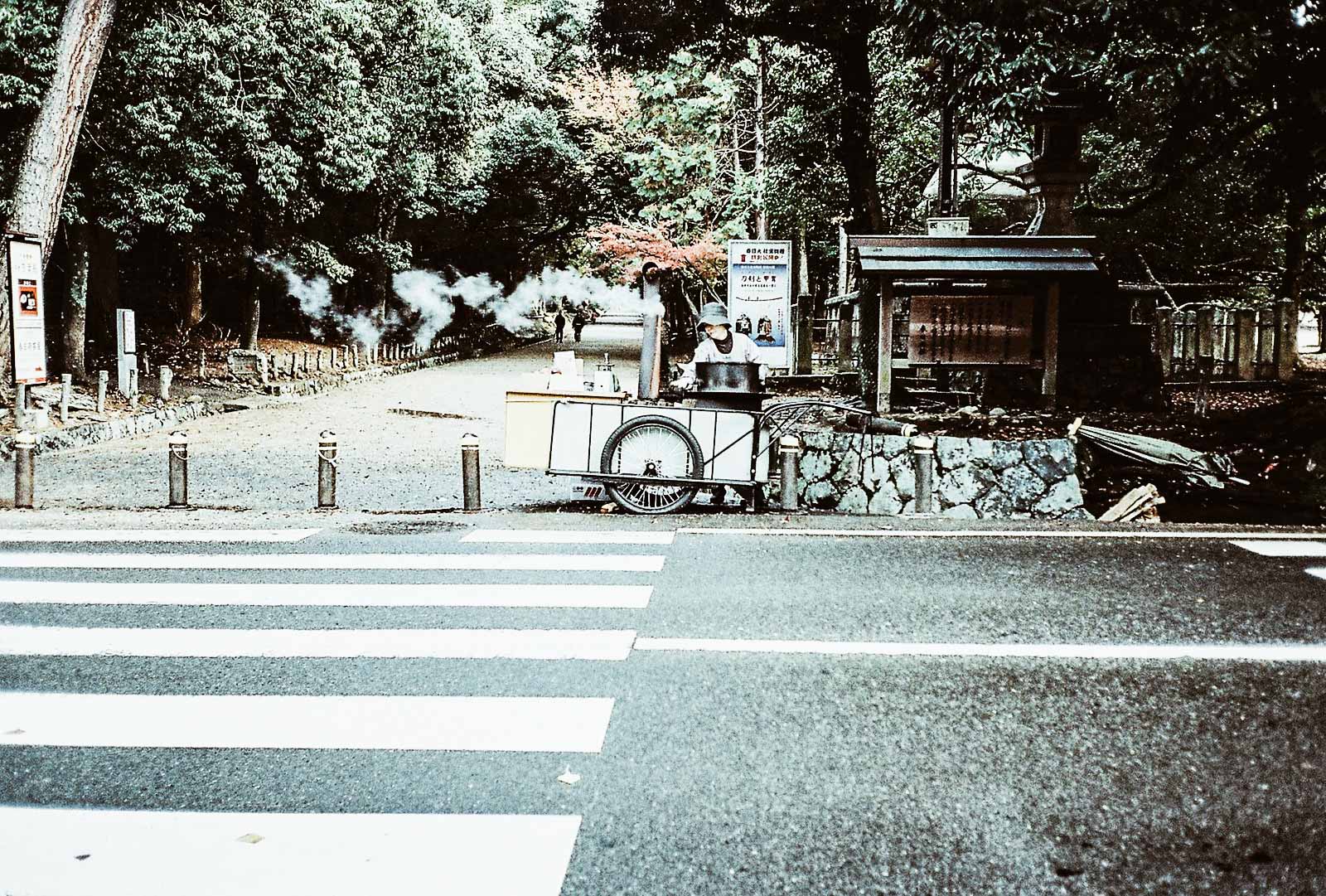
photo credit: jackwilson
Profumi, colori e sapori si mescolano per le strade del Giappone. che si tratti di eventi speciali o di un giorno qualunque, le tradizionali bancarelle di cibo da strada, comunemente chiamate Yatai, offrono meraviglie culinarie. Dolci o salate, queste leccornie non si trovano normalmente nei ristoranti oppure hanno un sapore molto più intenso cucinato dal venditore ambulante.
Tutte le appetitose pietanze on-the-go sono particolarmente economiche, ma sempre di altissima qualità. La selezione che gli Yatai offrono varia spesso tra le stagioni e anche tra le regioni del Giappone. Nonostante questo, l’elenco delle prelibatezze è talmente vasto che preferisco non dilungarmi in chiacchiere: iniziamo subito questo speciale viaggio sensoriale!
Alcuni degli street food più famosi

photo credits: jmettraux
Okonomiyaki
Diffuso soprattutto ad Osaka è anche conosciuto come “Pizza di Osaka”. Lo お好み焼き letteralmente okonomi = ciò che vuoi, yaki = alla griglia, è la versione giapponese di un classico pancake. Tuttavia questo piatto non è dolce ma a base di scaglie di verza, farina e uova, con l’aggiunta di ingredienti a piacere come carne e pesce. Il tutto viene cucinato su una piastra calda. Ne esistono delle varianti ad Hiroshima e Tokyo, ma questa sorta di “frittata” è divenuta famosa anche grazie all’anime “Ai shite Naito” (愛してナイト), da noi noto come “Kiss Me Licia”. Ricordate il padre di Yaeko (Licia), Shige-San (per noi Marrabbio)? Infatti era proprio lui il proprietario dell’okonomiyaki-ya, il ristorantino tipico specializzato in okonomiyaki!
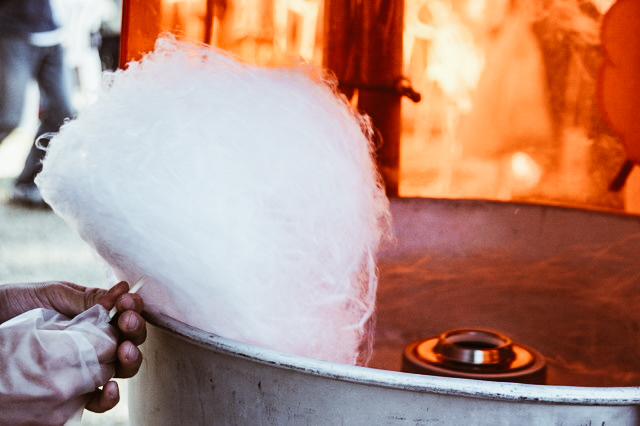
photo credits: favy-jp.com
Wataame
Immaginate di poter mangiare una soffice nuvola e avrete il Wataame o Watagashi (綿あめ), il dolce zucchero filato giapponese. Questa semplice leccornia amata soprattutto dai bambini, si può trovare ovunque. Infatti li troviamo presso gli Yatai, in cui è possibile vederne la realizzazione, oppure acquistarlo già pronto e confezionato in pacchetti colorati e spesso decorati con personaggi manga.
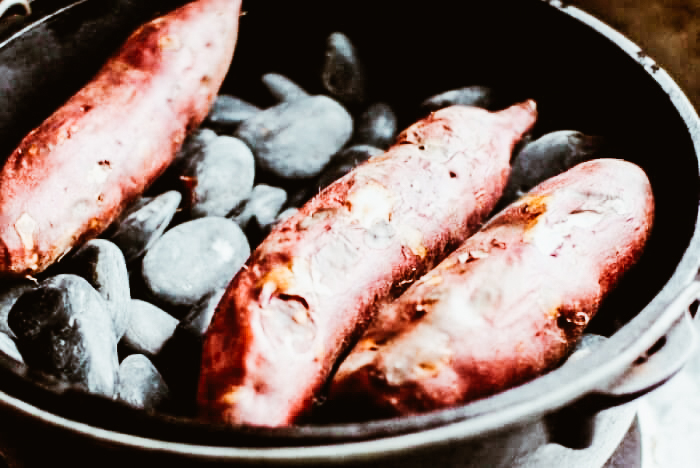
photo credits: jpninfo.com
Yaki Imo
Lo yakiimo o Ishi Yaki Imo (焼き芋/ 石焼き芋) è un piccolo tesoro autunnale autentico della tradizione giapponese. Realizzato con la satsuma-imo, una patata dolce giapponese dal sapore di caramello, essa cuoce in un forno a legna ed è servita avvolta in carta marrone. E’ facile individuare lo yatai che offre questa specialità. Infatti, se si tendono le orecchie, si potranno udire delle canzoni che si diffondono per le strade per attirare i clienti!
Molto tempo fa gli yaki imo ya san (焼き芋屋さん, come vengono definiti i venditori ambulanti di patate arrosto) attraversavano le strade della città con i carrelli. Tuttavia, oggi è più facile vederli spostarsi su piccoli camioncini.
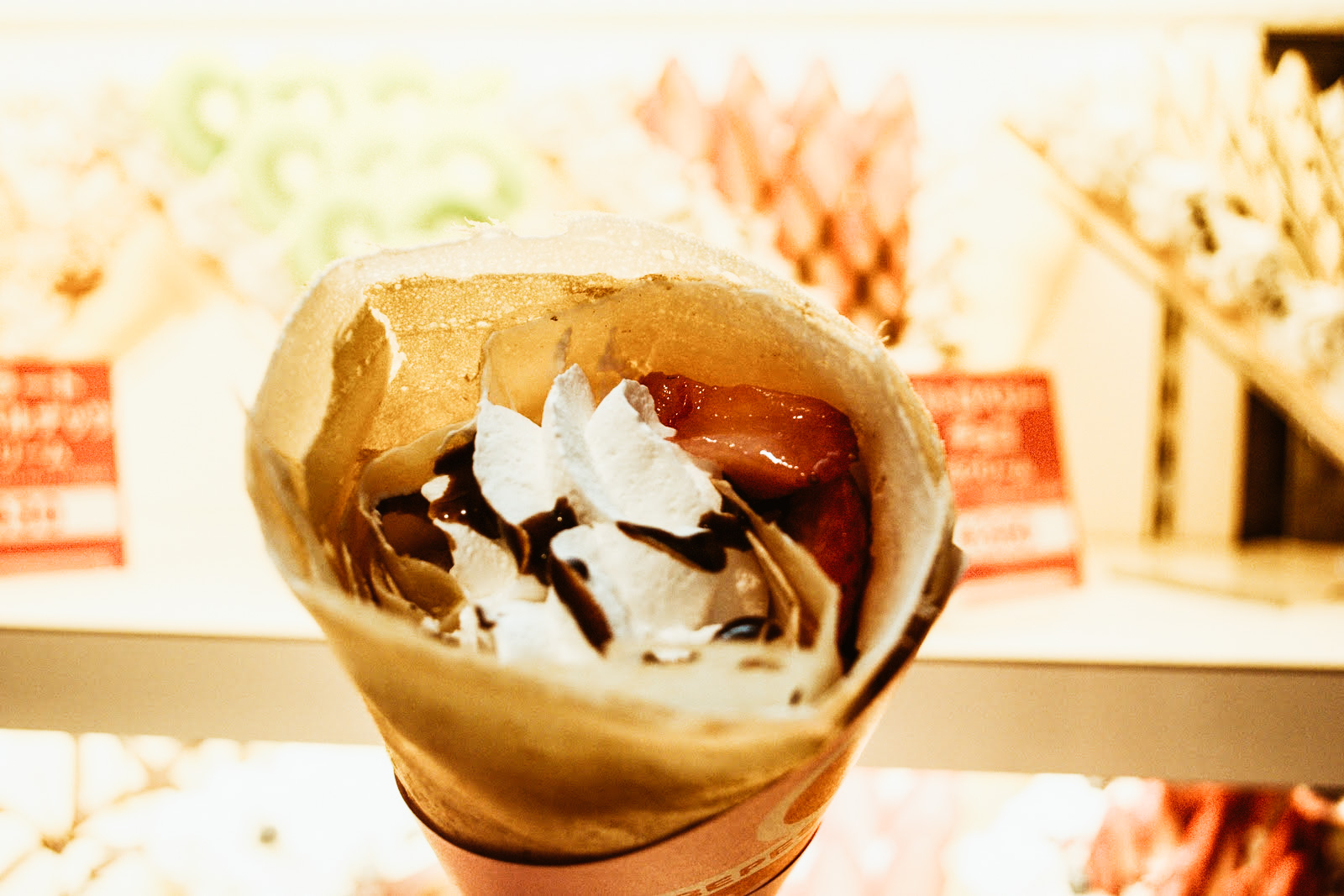
photo credits: littlejapanmama.com
Crepes
Le crepes, originarie della Francia, si sono diffuse presto anche nel Sol Levante. infatti, sul finire degli anni ‘70, divennero lo snack dolce on the go soprattutto nel quartiere di Harajuku. La classica pastella viene cucinata sulla piastra calda e farcita con nama kurimu (panna montata delicatamente dolce), cioccolato, gelato e frutta, variegate con vari sciroppi, piegate nella tipica forma a cono e servite avvolte nella carta per facilitarne il consumo.

photo credits: nonilo.com
Imagawayaki
L’imagawayaki (今川焼き) è un dessert che si trova spesso in vendita nei banchi dei festival. In base alla regione il suo nome varia in Ooban yaki (大判焼き) o Kaiten Yaki (回転焼き). Tuttavia, “wagashi” (和菓子) è il nome originario di questo dolce che si diffuse durante il periodo Edo. La pastella, a base di farina, uova ed acqua, viene versata in una speciale piastra e farcita con i fagioli rossi (azuki). Con il tempo si sono diffuse molte varianti che prevedono un’ampia varietà di ripieni. Possiamo trovare infatti crema alla vaniglia, creme e confetture di frutta, curry, carne, verdura e patate.
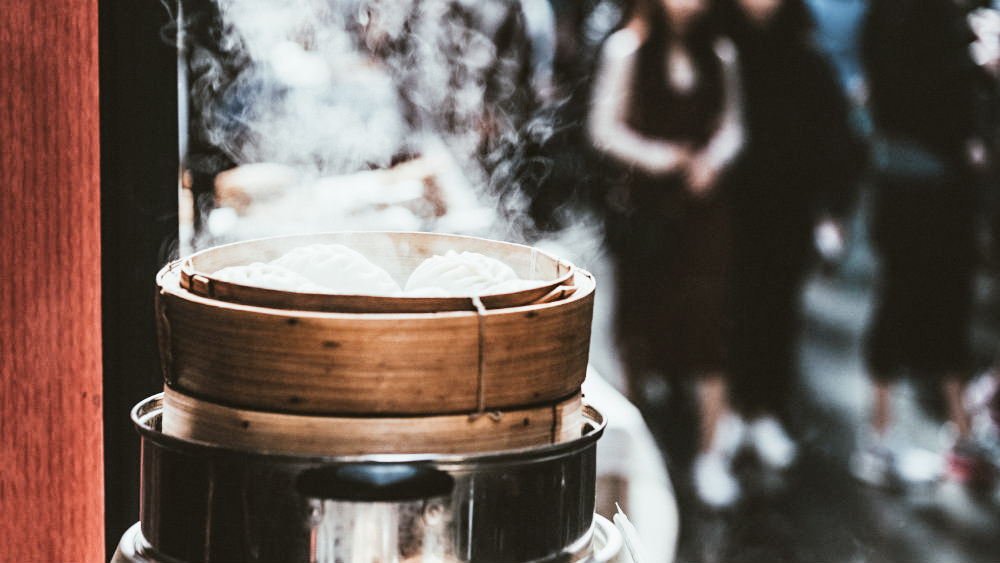
photo credits: italianfoodacademy.com
Nikuman
Questi irresistibili panini rotondi ripieni di carne (niku) solitamente carne di maiale (buta) e cotti al vapore, sono un’istituzione a Yokohama! Il loro nome però varia da Nikuman (肉まん) nella regione del Kanto a Butaman (豚まん) nella regione del Kansai. Assaporati da soli o accompagnati dalla salsa di soia, sono uno spuntino perfetto, assolutamente da provare!
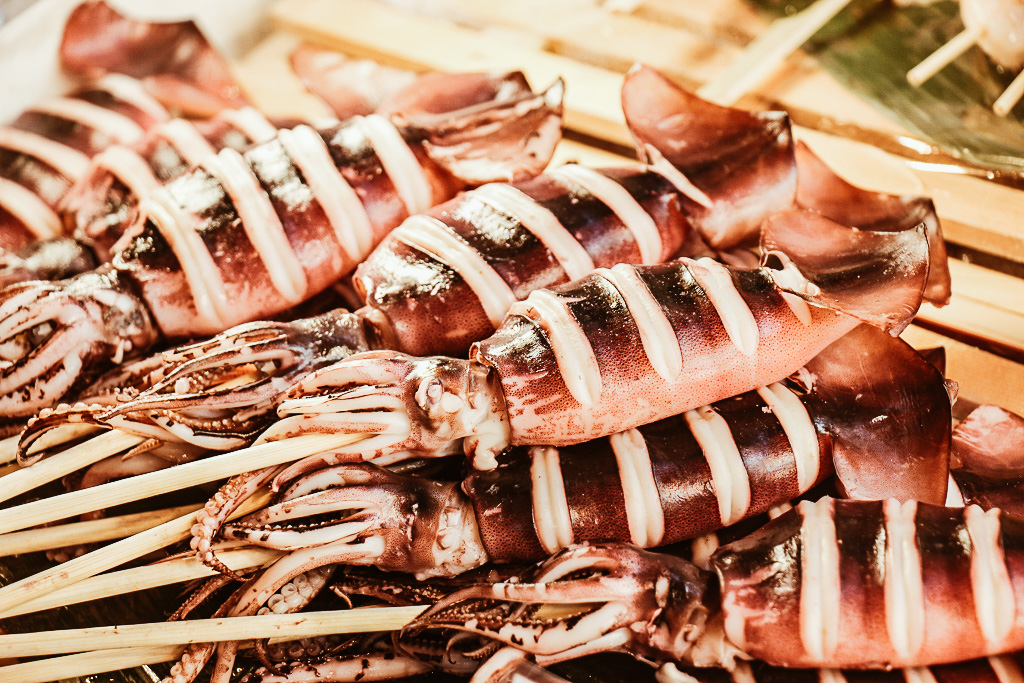
photo credits: jetsettingfools.com
Ikayaki
L’Ikayaki (いか焼き, イカ焼き o 烏賊焼, calamari al forno o alla griglia) è uno degli snack “da strada” preferiti dai giapponesi! Solitamente sono accompagnati con salsa di soia, teriyaki o una tradizionale salsa che in genere include vino di riso, pasta di miso, zenzero e salsa di soia. Ciò che rende questi calamari teneri e paffuti è la loro rapida preparazione e vengono serviti immediatamente una volta fuori dalla griglia.
Trovare gli ikayaki è abbastanza semplice: mercati, santuari e feste locali offrono sempre questa prelibatezza!
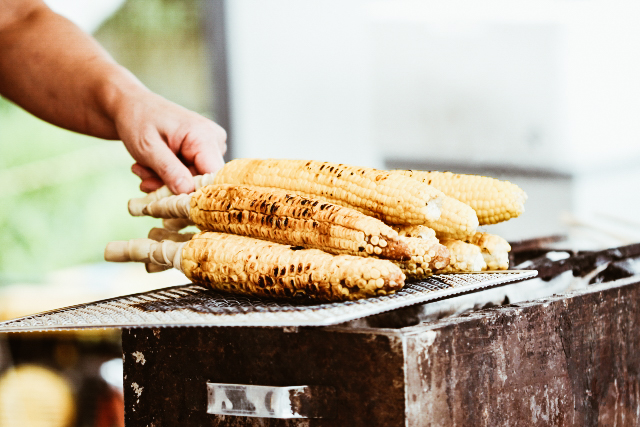
photo credits: zojirushi.com
Yaki Tomorokoshi
In Giappone, lo Yaki Tomorokoshi (焼きとうもろこし) è uno degli street food stagionali che è possibile trovare alle fiere e durante i festival. Esso consiste un una pannocchia grigliata, ricoperta da una miscela di salsa di soia dolce e pepe speziato.

photo credits: favy-jp.com
Choco Banana
Un dessert estremamente semplice eppure unico nel suo genere: le choco banana sono un must dei festival in Giappone! Deliziose banane ghiacciate ricoperte da qualsiasi tipo di cioccolato e decorate con granella di zucchero o nocciole. Servite su un bastoncino, le choco banana possono far sorridere noi occidentali grazie alla loro forma equivoca, ma una volta assaggiate non potrete più farne a meno!
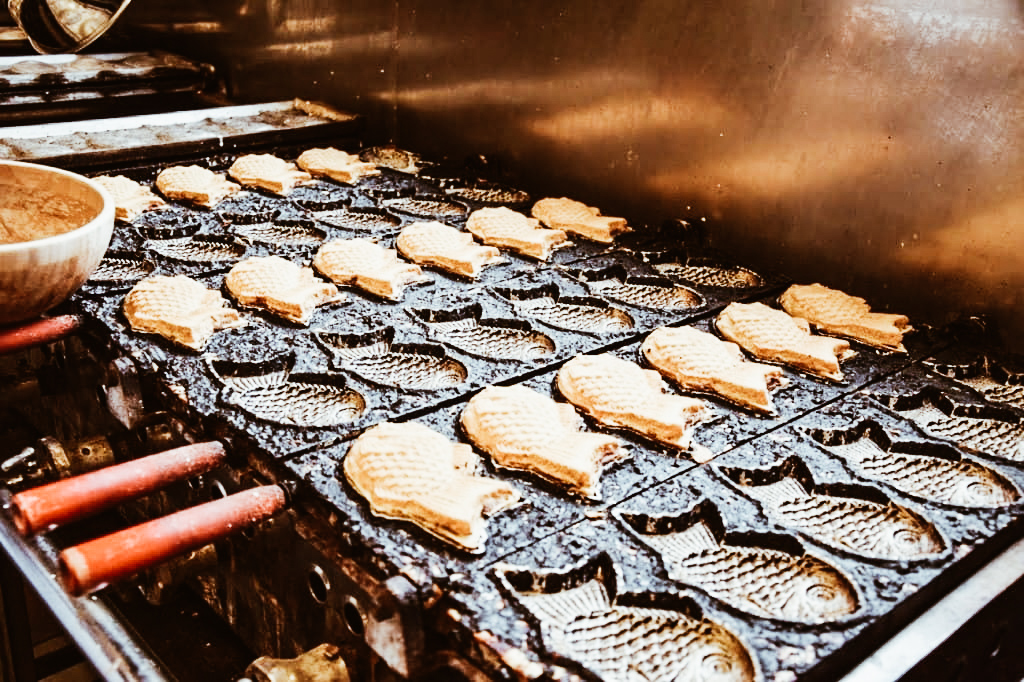
photo credits: matcha-jp.com
Taiyaki
Il profumo paradisiaco del Taiyaki (たい焼き) è unico ed è impossibile resistervi! La loro forma è quella tipica “a pesce” (“tai”, farciti con crema di fagioli rossi o panna, ma anche tantissime variazioni stagionali come le patate dolci e le castagne!
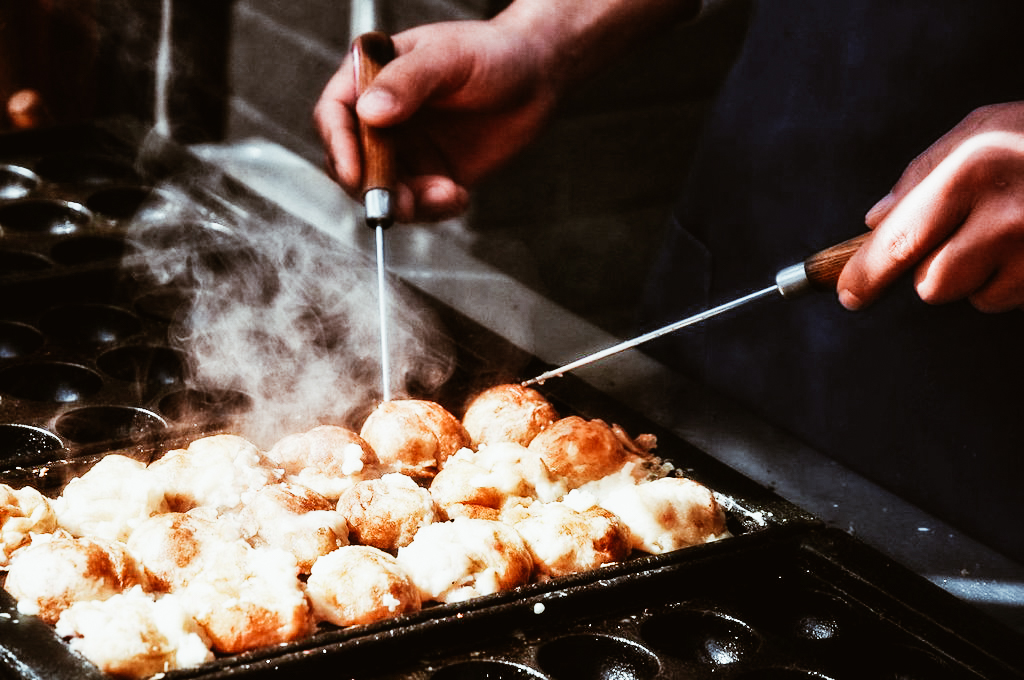
photo credits: Hayley Casarotto
Takoyaki
I takoyaki (たこ焼き polpo fritto o grigliato) sono polpette fritte di pastella ripiene di polpo, cipolle verdi, zenzero e pezzi di tempura. Esse vengono poi condite con una salsa Otafuku, l’alga aonori tritata, maionese e katsuobushi (fiocchi di tonnetto striato essiccato e affumicato). E’ una specialità della cucina di Osaka, ma i venditori di queste delizie si possono trovare in quasi tutte la nazione.
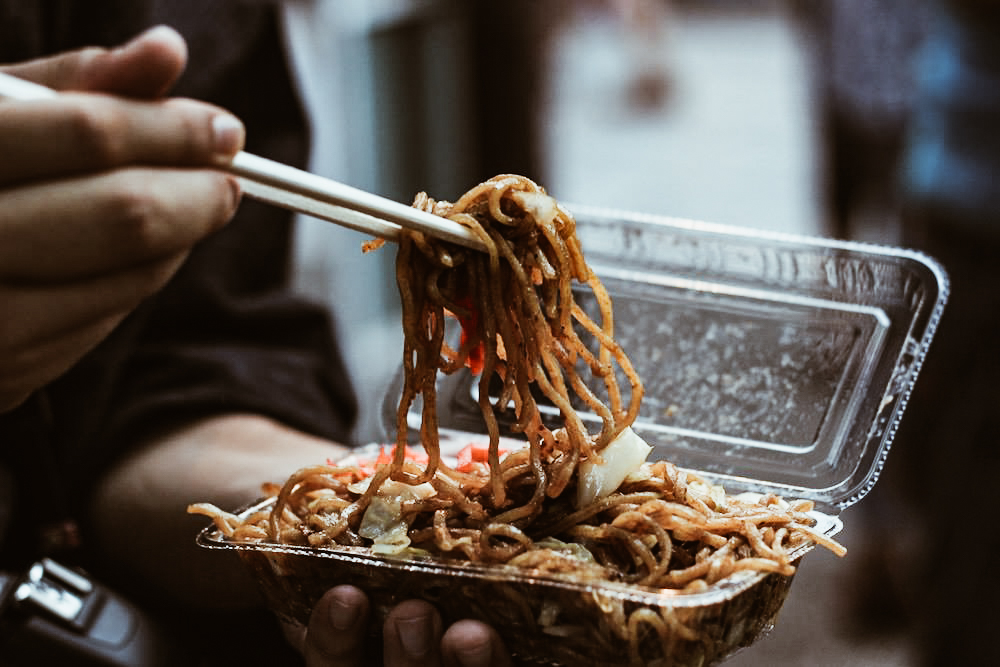
photo credits: hubjapan.io
Yakisoba
Gli Yakisoba (焼きそば, spaghetti saltati) sono uno dei comfort-food per eccellenza della cucina giapponese ed uno degli snacks più venduti dalle bancarelle durante i festival! La pietanza consiste in noodles saltati in padella con pezzetti di maiale. Accompagnati da varie verdure come cavoli, carote e cipolle e conditi con una salsa speciale che conferisce loro il tipico sapore speziato. Per la strada si possono trovare persino serviti in stile hot-dog all’interno di un panino e conditi con maionese e zenzero sottaceto!
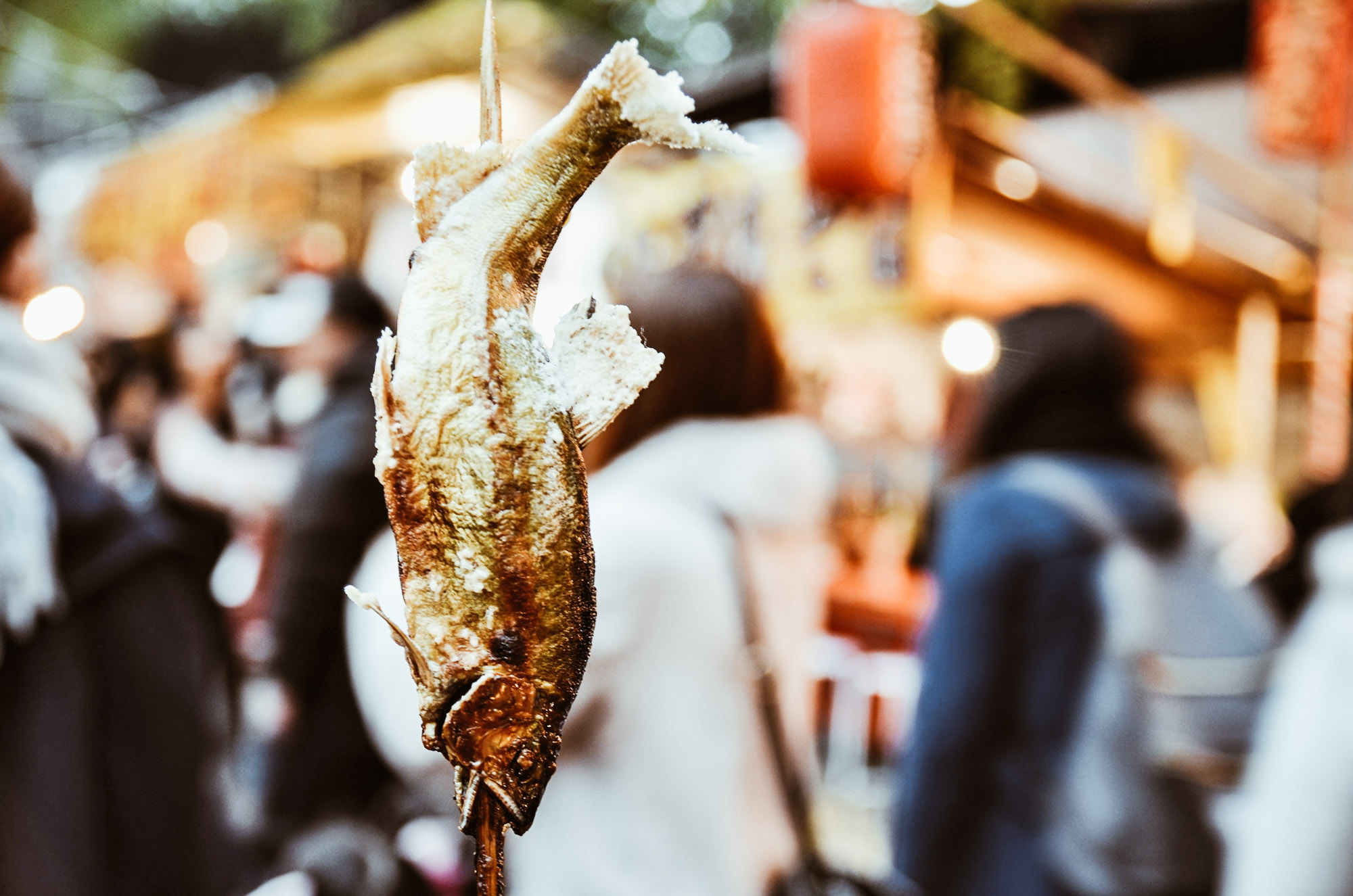
photo credits: pellgen (@1179_jp)
Ayu No Shioyaki
Gli Ayu no Shioyaki (鮎の塩焼き) sono pezzi di pesce tipico del Giappone grigliato e condito solamente con sale. Questi vengono poi infilzati nello spiedino e rappresentano un must estivo che richiama la pace e l’energia dei fiumi.

photo credits: e-sumida.gr.jp
Kare Pan
Il kare pan (カレーパン) è un insolito e gustoso snack consistente in curry giapponese avvolto in un impasto leggermente dolce, impanato e fritto. Il curry utilizzato è molto diverso da quello che noi conosciamo qui in occidente. Infatti, è di un colore scuro ha un sapore più delicato che bene si adatta a questa particolare ricetta.
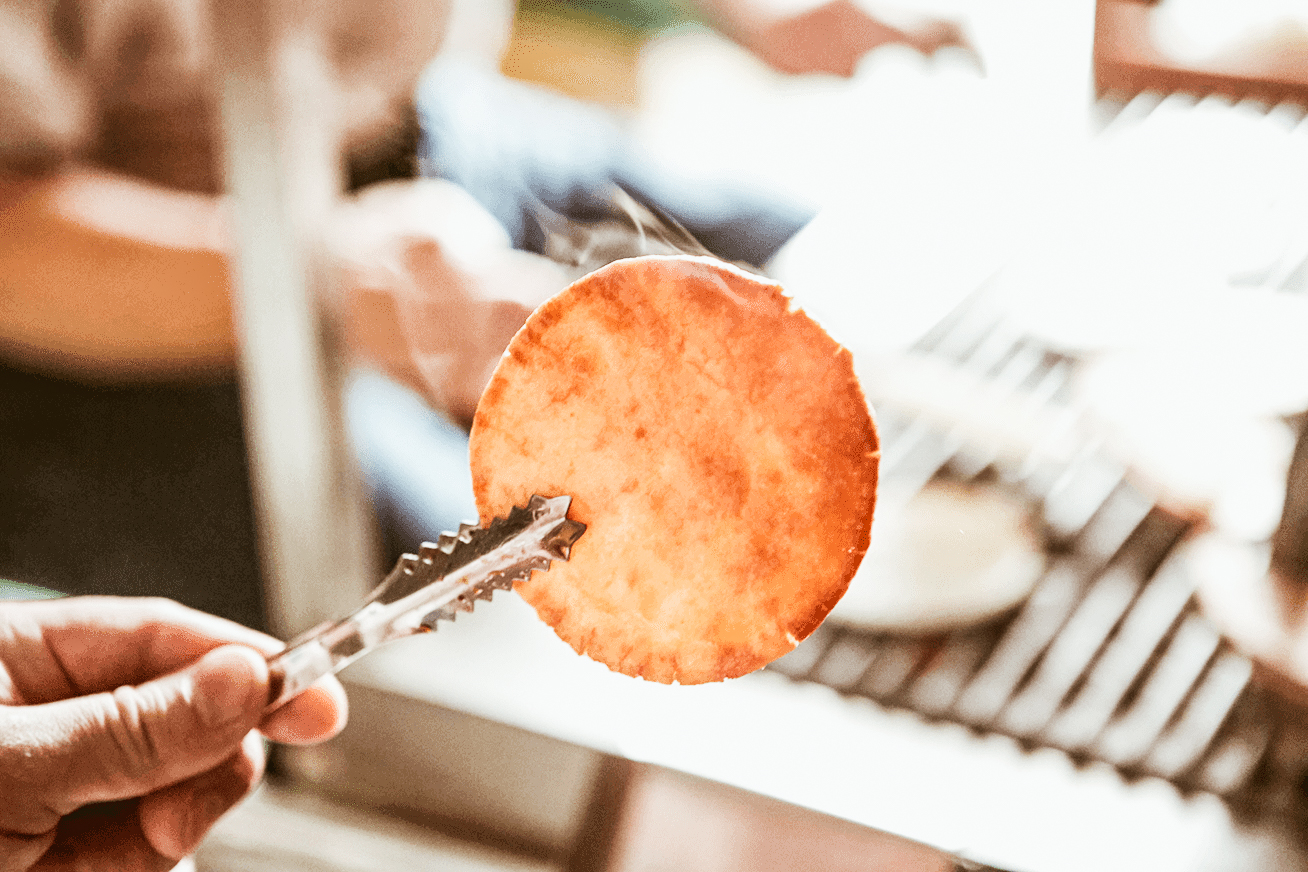
photo credits: e-sumida.gr.jp
Senbei
Una griglia a carbone, farina di riso, acqua e una miriade di sapori, sono i fondamenti dello Senbei (せんべい). Conosciuti anche come crackers di riso giapponesi, nessuno può resistere. Dolci o salati, i croccanti senbei si presentano di varie forme e dimensioni e per 300 yen. Uno snack assolutamente da provare!

photo credits: M’s photography
Dango
All’esterno dei Templi Shintoisti, fanno capolino i venditori di dango (団子)! Questi sodi gnocchi rotondi di farina di riso glutinoso e acqua sono tipicamente serviti su uno spiedino e ne esistono di diversi tipi. An-Dango sono i più popolari in Giappone a base di anko addolcito. Invece, Bocchan Dango sono i più famosi ed estetici. Infatti, noi siamo abituati a vederli un po’ ovunque online e negli Anime. Sono disponibili in 3 colori: il primo è colorato dai fagioli rossi (rosso), il secondo da uova (Giallo), e il terzo dal tè verde (verde). I Chichi dango invece sono leggermente zuccherati, mentre i Goma dango hanno i semi di sesamo e possono essere sia salati che dolci. Passiamo poi ai Kinako dango a base di farina di soia tostata e ai Mitarashi dango ricoperti da una glassa di salsa di soia dolce.
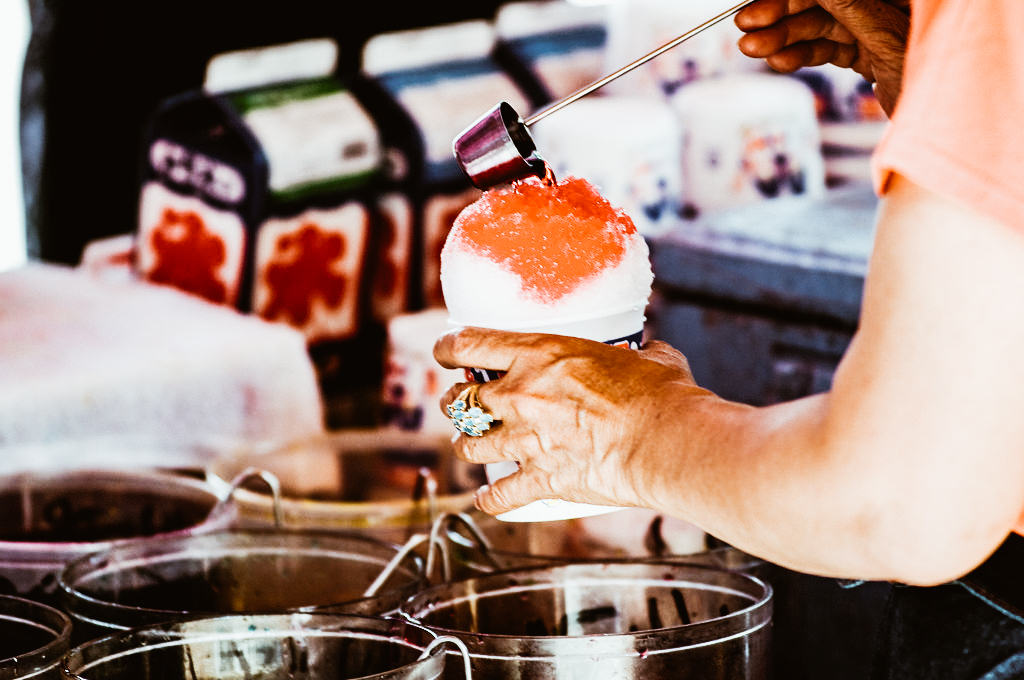
photo credits: Justin C.
Kakigōri
Sarebbe un’eresia definire il kakigōri (かき氷) come un granita: è qualcosa di più speciale, dalla consistenza soffice come la neve! Il ghiaccio così tritato viene aromatizzato con un sciroppo fruttato (fragola, ciliegia, limone, tè verde, uva, melone, prugna dolce) e addolcito con il latte condensato. Ne esiste una versione originaria di Kagoshima, il shirokuma (白熊, letteralmente “orso polare”), aromatizzato con latte condensato, piccoli mochi colorati, frutta (mandarino, ciliegia, ananas e uvetta ) e pasta di fagioli dolci (gli azuki).
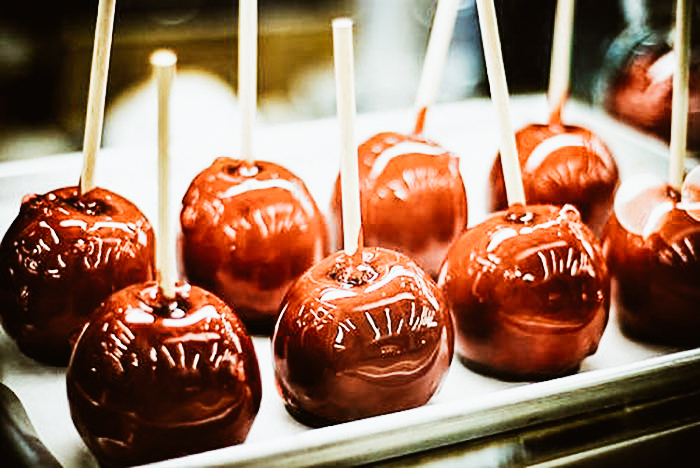
photo credits: yutaka.london
Candy Fruits
La frutta candita è tra la più diffusa per le strade del Sol Levante. Ichigo Ame (fragole candite), Mikan Ame (mandarino giapponese candito), Ringo Ame (mele candite) e Anzu Ame (albicocche candite) sono irresistibili. Se siete degli amanti dei dolci non potete perderveli. Succosi frutti immersi nello sciroppo caramellato e infilzati da uno spiedino per essere mangiati on-the-go mentre i vostri occhi si riempiono delle meraviglie del Giappone!
Questi street food sono solamente un indizio di tutto quello che il Giappone può offrire. Tuttavia, se vi viene fame mentre state camminando per la strada perchè un buon profumo vi ha tentati, allora non esitate! Correte ad assaggiare queste specialità e fateci sapere cosa ne pensate!
Condividi:
- Fai clic per condividere su Facebook (Si apre in una nuova finestra)
- Fai clic qui per condividere su Twitter (Si apre in una nuova finestra)
- Fai clic qui per condividere su Tumblr (Si apre in una nuova finestra)
- Fai clic qui per condividere su Pinterest (Si apre in una nuova finestra)
- Fai clic per condividere su Telegram (Si apre in una nuova finestra)
- Fai clic per condividere su WhatsApp (Si apre in una nuova finestra)
- Fai clic qui per condividere su Reddit (Si apre in una nuova finestra)
- Fai clic qui per stampare (Si apre in una nuova finestra)






